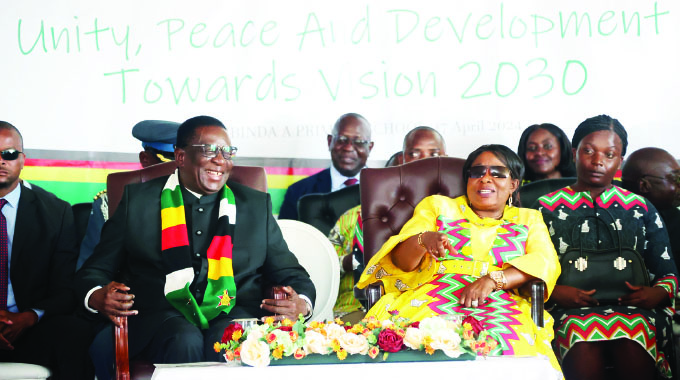NIEEB pushes for 51pc equity in mines

Sources said NIEEB was against the committee’s push for 26 percent direct equity holding and for the balance adding to 51 percent to be attained through empowerment credits for investing in community projects.
However, Cabinet would review the proposals from both the indigenisation advisory board and sectoral committee before they are passed.
NIEEB argued that while credits were acceptable the model was complex, needed to be determined first and was therefore not yet applicable.
NIEEB was in agreement with the committee’s recommendation for at least 51 percent of all mines to be owned by locals as minerals were a finite resource.
“However, the board disagreed with the committee’s proposal to the effect that of the 51 percent, only 26 percent be direct equity while 25 percent is to come from credits for socially desirable projects,” said the source.
The committee, however, proposed that NIEEB be allocated a quota equal to 10 percent equity in all mines to achieve broad-based empowerment. The money earned would fund empowerment programmes.
When a foreign mining firm fails to secure local investors, the indigenisation quota would be bought and warehoused under the indigenisation fund.
“There is a need for national share here in the cashflow generated by the non-renewable mineral resources. To that end, a 10 percent levy on gross profit is recommended to capitalise NIEEB to fund empowerment programmes.”
Sources said the sectoral committee on mining also suggested that a portion of revenues be invested in developing communities in which the mines operate since mines take long before they start declaring profits.
The profits in the initial years are reinvested in expanding operations making the call for portion of the revenue to be invested in local communities valid.
“To encourage companies to do this, it is proposed that empowerment credits be given, to a certain extent, for socially and economically desirable expenditure over and above the mine’s normal operating expenditure.”
These would include financial, equipment and infrastructural support to national institutions of higher learning in technical and other strategic projects.
Credits could also be awarded for approved equipment, technical and financial support for small-scale and artisanal miners, infrastructure support and other development support requested and approved by authorities.
A model to evaluate and convert economic and social expenditure to equity credits is currently being worked out, making its application for now a non-starter.
Challenges cited towards full indigenisation include high capital requirements, claims concentrated in the hands of a few, high application and licensing fees as well as the acute shortage of electricity.
Proposals made to counter barriers to that end included setting up a fund through NIEEB to help indigenous investors with exploration and policies that compel private players to partner with locals in exploration activities.
Credits were suggested as a way to reward large operators who assist small miners through technical, financial and equipment to promote small-scale miners.
There was also need to ensure that ground not being used and held for speculative purposes be released to those who could put it to productive use through the enforcement of the already existing “use it or lose it” policy.
Government has also been urged to ensure that large mining firms list on the Zimbabwe Stock Exchange and that the bourse is made investor friendly.
The committee also suggested that the Chamber of Mines should set up a State enterprise that pools skills and equipment to be hired out to small miners at a subsidised cost to enable the small operators to start up and grow.-Herald Business







Comments